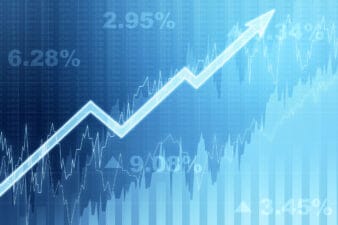Despite the growing volatility, the S&P/TSX Composite Index is up 2.5% this month and 6.2% this year. However, concerns over high inflation, geopolitical tensions, and the impact of higher interest rates on the global economy persist. So, investors should look to strengthen their portfolios by adding quality stocks. Here are my two picks.
Dollarama
Dollarama (TSX:DOL) would be one of the top stocks to have in your portfolio due to the defensive nature of its business and healthy growth prospects. The company’s superior direct sourcing model reduces intermediatory expenses and offers higher bargaining power, thus allowing it to provide various consumer products at attractive prices. So, the company enjoys healthy same-store sales even during a challenging macro environment. Besides, the company has expanded its store count from 652 in fiscal 2011 to 1,551 by the end of fiscal 2024.
Amid these expansions and healthy same-store sales, Dollarama has grown its revenue and adjusted EBITDA (earnings before interest, tax, depreciation, and amortization) at an annualized rate of 11.5% and 17.3%, respectively, since 2011. Supported by solid financials, the company has delivered around 750% returns over the last 10 years at an annualized rate of 23.8%.
Meanwhile, Dollarama continues to expand its restaurant count by opening 60 to 70 stores yearly and hopes to increase its store count to 2,000 by fiscal 2031. Given its efficient capital model, quick sales ramp-up, and a lower payback period for new stores, these expansions could continue to drive its financials in the coming years. Besides, Dollarcity, where Dollarama owns a 50.1% stake, has also planned to add 318 stores over the next five years to increase its store count to 850. The expansion could increase Dollarcity’s contribution towards Dollarama.
Amid its solid returns, Dollarama trades at 31 times its projected earnings for the next four quarters. Although its valuation looks expensive, I believe it is justified, given its solid underlying business and healthy growth prospects. Further, the company has also raised its dividends 13 times since 2011, making it an excellent buy in this uncertain outlook.
Enbridge
Enbridge (TSX:ENB) is a diversified energy company that operates a pipeline network that transports oil and natural gas across North America. It also has a strong presence in the natural gas utility and renewable energy space. Its cost-of-service contracts and low-risk utility business make its financials less susceptible to market volatility.
Further, around 80% of its adjusted EBITDA is inflation-indexed, shielding against rising prices. Supported by these stable cash flows, Enbridge has paid dividends uninterruptedly since 1956 and has increased its dividends at an annualized rate of 10% for the previous 29 years.
Meanwhile, Enbridge is working on acquiring three natural gas utility assets in the United States. These acquisitions could increase its customer base to 7 million, thus making it North America’s largest natural gas utility company. Further, it is continuing with its $25 billion secured capital program, expanding its midstream, utility, and renewable asset base. Along with these growth initiatives, the rising contribution from utility assets could strengthen its cashflows, thus making its future dividend payouts safer.
With a quarterly dividend of $0.915/share, Enbridge’s annual payout is $4.58/share, while its forward dividend yield is 7.4%. Besides, its NTM (next 12 months) price-to-earnings multiple of 16.8, making it an attractive buy.







